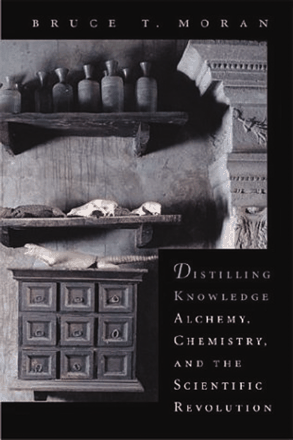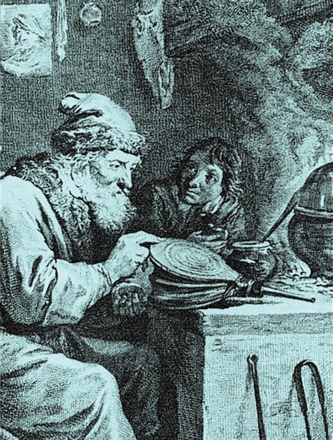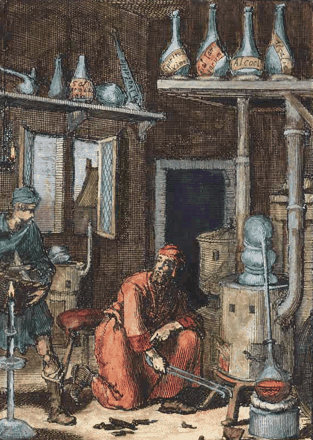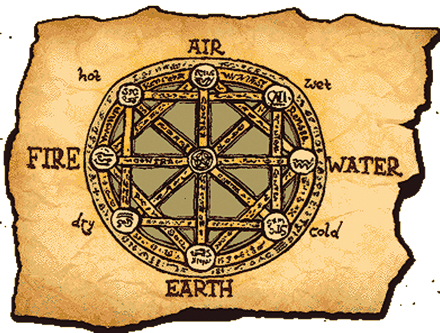Lead to Gold: The Transmutation of Alchemy
- Dan Collinge, BA
Distilling Knowledge: Alchemy, Chemistry, and the Scientific Revolution
Bruce T. Moran. Cambridge, MA: Harvard, University Press; 2005., 224 pages. $24.95, ISBN: 0674014952
To many people, the word “alchemy” probably conjures images of medieval mages bent over cauldrons trying to turn lead into gold, casting whispers to their hunchbacked assistants about the Philosopher’s Stone—which of course is the key to eternal life (just ask Lord Voldemort).
Chemistry, on the other hand, might bring to mind white lab coats, beakers, periodic tables, and (Dear God!) the dreaded Henderson-Hasselbalch equation.
Obviously, this is because chemistry is science, whereas alchemy is, well, not science. Or at least that’s the common perception. However, as Bruce T. Moran demonstrates in Distilling Knowledge: Alchemy, Chemistry, and the Scientific Revolution, things are not quite so cut and dried, and the distinction between alchemy and early chemistry is a bit muddled. Indeed, many of the so-called fathers of modern science were also alchemists in their spare time, but this fact isn’t often noted in textbooks. For centuries, alchemy has been locked away in the attic like the crazy uncle of the Scientific Revolution. Moran argues that perhaps it is time we freed alchemy and recognized its contribution to the science we know today.
Part of the problem, he says, is that hardly anyone knows what alchemy was really about. Much of the book’s text, therefore, is spent trying to rectify this ignorance through a whirlwind tour of names, dates, and important ideas that show alchemy as a complex and somewhat nebulous practice (science or pseudoscience depending on your viewpoint). In addition to converting everything under the sun to gold, it turns out the alchemists were also concerned with treating diseases and understanding the relationship between the human body and the cosmos; and it was they who popularized the idea of experimenting in the laboratory. Moran posits that one of the most important achievements of alchemy was simply the process itself, the trial and error, and the knowledge gained “by means of the acid scars and burnt fingers” that accompanied their experimentation. Alchemy, Moran continues, is not easy to define because it was not something people believed in so much as something people did. One of their favorite things to do was distilling. The object of distillation was given several names: the fifth essence (i.e., quintessence) to some, to others —like Roger Bacon—it was prima materia. In either case, what they sought through this process of separation was the stuff of creation, elements at their purest, from which all matter on earth is composed. Discovering such a pure and divine essence, they reasoned, would lead them to a miracle elixir to cure all ailments. The “art of separation” became known as chymia, an art that would later be claimed by the fledgling science of chemistry.
Owing to the use of the relatively new-fangled printing press, many alchemical texts found their way into the homes of the common people. One widely available book, written by Andreas Libavius (1555–1616), is significant because it is considered by many scholars to be the first chemistry textbook: and its name was…Alchemy. Moran underscores this point as proof that the lines between alchemy and chemistry were not yet drawn. Thanks to Libavius and his colleagues, alchemy became part of the quotidian life of the Renaissance—merchants turned to it to perfect their wares, and kitchens were transformed to apothecaries. A few years earlier, in 1535, a book called The Proper Use of Alchemy was published. This little book made public for the first time the process of turning iron to steel. Two centuries later, a pair of alchemists by the names of Böttger and Tschirnhaus discovered not the Philosopher’s Stone that they sought, but instead a “white, translucent material,” which begat the famed Dresden porcelain industry. Alchemy even found a foothold in royal courts and was popular enough to be condemned by the Church, which (naturally) was worried that if alchemists could indeed harness the ability to create gold they might be able to outpace the wealth and consequent power of Rome. Excluding the displeasure of the Vatican, however, most folks found alchemy to be quite useful.
How then did such a popular and seemingly utilitarian practice fall into disrepute? Blame chemistry, Moran says. In order to gain acceptance in the universities, chemists had to distance themselves from their alchemist cousins, who for centuries had aroused the suspicions of academics. In 1663, Christofle Glaser defined chemistry as “a scientific art teaching how to dissolve bodies, how to draw out from them the different substances of their composition, how to unite them again, and how to bring them to a higher perfection.” Sounds a lot like alchemy, right? Or it might have if Nicholas Lemery had not at the same time been decrying, to the French academic community, that alchemists were frauds who dreamed of nothing but gold. Alchemy, Moran writes in one of his very best lines, “was sent to live with its metaphysically batty great aunts.” Yet in spite of the negative campaigning, alchemy, like the Democratic Party, hung on. Sir Isaac Newton, genius, falling apple observer, and eminent scientist, was an avid fan of alchemy. He scoured the texts of ancient alchemists, and many of his own writings reflect centuries-old beliefs, such as the existence of a “universal spirit” that infused all of creation and caused attractions between objects. Newton was not ready to discard alchemy, and neither was Robert Boyle, who still believed in the Philosopher’s Stone. Yet these men are recorded as scientists, not as alchemists.
Distilling Knowledge (which is part of a series published by Harvard University Press entitled New Histories of Science, Technology, and Medicine) is not a thick volume; it can, however, be slow going at times. Slogging through the great deluge of dates, names, and important texts gets a bit disorienting, but Moran is careful to keep his language informal and engaging. For example, he describes nineteenth-century philosopher and doctor William James as surviving in photographs with his “massive and scraggly beard,” a nice touch of the wry humor sprinkled throughout the book. In another passage, he mentions that students in the laboratory class of the German alchemist Johannes Hartmann (one of the first of its kind in the world) “were required to leave their swords at the door.” Moran has also inserted a number of illustrations in the text—Renaissance era ink renderings of alchemists at work in their private labs, or pictures of Rube Goldberg–like contraptions used for distilling chemicals. Not only do they provide helpful visuals, but they help to break up the longer passages as well.
One of Moran’s biggest strengths is his use of poignant quotes. From Pablo Picasso: “This picture is not thought out and determined beforehand, rather while it is being made it follows the mobility of thought.” Part of the book’s central argument is that the Scientific Revolution was not a period of time as it is often treated, but rather a gradual movement of thought. In this context, something as strange as alchemy is not at all out of place. Instead, it plays a key role as the impetus for modern sciences like chemistry. Moran argues that chemistry did not replace an outmoded practice in alchemy, but subsumed it. For Moran, the ancient art can still stand on its own two feet. The case for alchemy is compelling.
- © American Society for Pharmacology and Experimental Theraputics 2005







